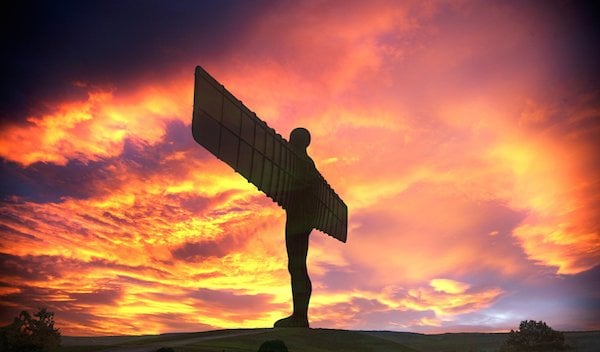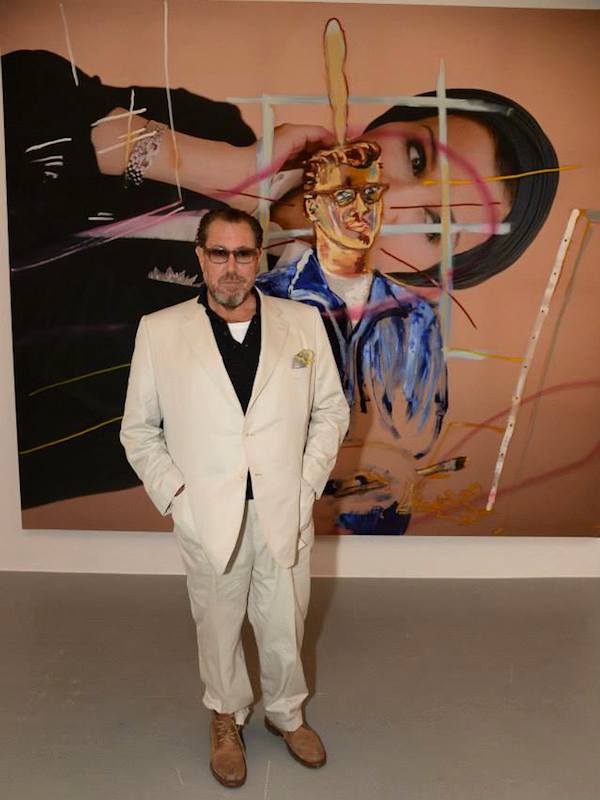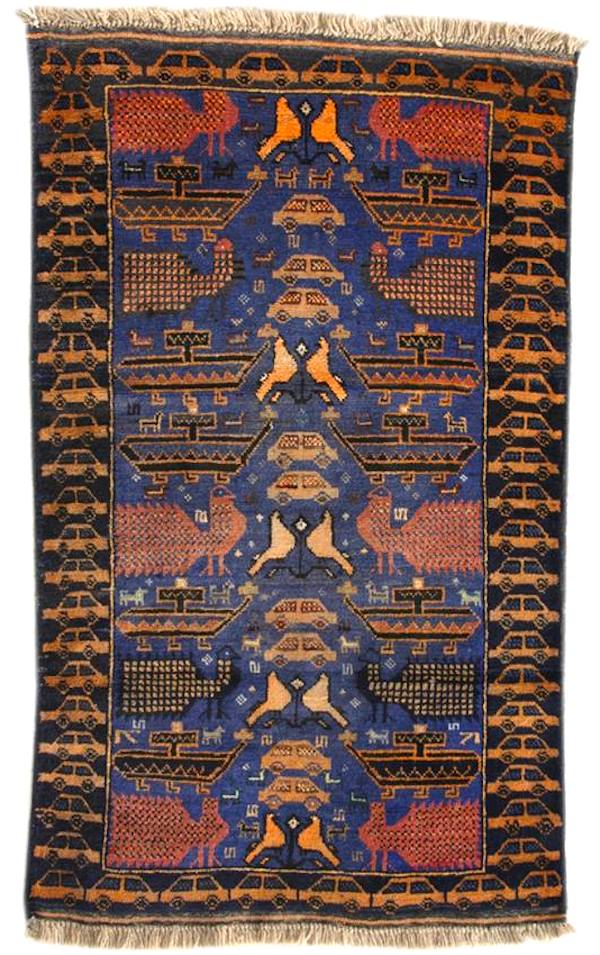Art & Exhibitions
Around The Art World In Six Minutes
Schnabel bombs in Britain, Gormley flogs baguettes, and free gallery booze.

Schnabel bombs in Britain, Gormley flogs baguettes, and free gallery booze.

Benjamin Sutton


Julian Schnabel at the Dairy Art Centre.
Courtesy Dairy Art Centre.
The Review: New York art star Julian Schnabel is having his first exhibition in the UK in 15 years at the Dairy Art Centre in London, and the Guardian‘s Laura Cumming takes no small amount of pleasure in completely trashing the artist’s latest paintings. “The whole show feels like an exercise in mannerism, in the market, in depressed expectations and the comfort of familiarity – what happens when people simply get so used to a style, a hook, a look, that two things happen. The original affront dies down, so that one forgets how bad the paintings were; and time casts its comforting spell so that one can hardly see them as anything other than Schnabels.”
The Controversy: After five years of closure, Paris’s Musée Picasso has set its long-awaited reopening for September, a full three years after its original planned reopening. Pablo Picasso’s son Claude Picasso’s son is still livid, telling Le Figaro: “I have the impression that France couldn’t care less about my father, or me.”
The Interview: With a retrospective at the Brooklyn Museum and a vast show of new works in Berlin, Chinese artist and activist Ai Weiwei is ubiquitous as ever, but how are things going back in Beijing? Clarissa Sebag-Montefiore visited the artist’s sprawling Caochangdi studio complex for a feature in Aeon, offering exceptional insight into his daily and current standing and the Chinese government’s attitude toward him. “Afraid of me?” he asked. “If I can freely express myself, they have reason to be afraid of me. But if my words cannot get on the [Chinese] internet or newspaper or any media, then why are they so afraid of me?”

Antony Gormley’s Angel of the North.
Via Facebook.
The Ad Campaign: British foodstuffs company Morrisons has turned Antony Gormley’s beloved beachfront sculpture installation Angel of the North into a giant billboard for its baguettes, a crass commercial co-opting that the artist blasted in an interview with the Guardian. “I’d rather the Angel is not used for such purposes, but it’s out there,” Gormley said of the ailing food store chain’s use of his work.
The Profile: Dan Colen, a young artist who has earned the ire of as many critics as he’s been praised by, is the subject of a new exhibition at the Brant Foundation in Connecticut and a short profile in the Wall Street Journal. Of his new studio in the harbor-adjacent neighborhood of Red Hook, Brooklyn, he says: “Walking out of your studio and seeing water instead of the Holland Tunnel, that’s going to affect how you create.”
The Behind-the-Scenes Feature: Following the arrests of Jose Carlos Bergantiños Diaz and Jesus Angel Bergantiños Diaz in Spain in connection with the Knoedler & Co. forgery scandal, the New York Times‘s Patricia Cohen takes a closer look at the nuts and bolts of running a multi-million-dollar operation peddling fake paintings by Mark Rothko, Jackson Pollock, Clyfford Still, and others. Unsurprisingly, she finds a world mired in opaque provenance verifications and ruled by absurd social conventions that seem unchanged from the late-19th century. “In an industry whose transactions cry out for verification of both title to and authenticity of subject matter,” says New York State Supreme Court Judge J. Shorter, “it is deemed poor practice to probe into either.”
The Raid: Underage individuals sometimes procure alcohol at art openings, a widely known fact that didn’t prevent Ohio liquor agents from descending upon an opening at Cleveland’s Loren Naji Studio Gallery on Friday and fining owner Loren Naji for giving away alcohol sans permit. Unsurprisingly, few other Cleveland art dealers consulted by the Plain Dealer knew that they technically need a permit to give away alcohol at openings.

A rug from ” Afghan Rugs: The Contemporary Art of Central Asia” at the BOCA Museum of Art.
Courtesy BOCA Museum of Art.
The Eye Candy: The practice of portraying modern warfare in Afghan rugs is the subject of a new exhibition at the BOCA Museum of Art in Boca Raton. The rugs are absolutely fascinating, as ARTnews makes clear in this short feature.
The WTF: During World War One, the British economist Maynard Keynes—who was, unbeknownst to many, also an avid collector of modern art—went on a buying spree in France on behalf of the UK government. Among the many works he snapped up was a still life by Paul Cézanne. But without sufficient space to transport it in his car, the BBC reports, he briefly hid it behind a hedge and sent someone to retrieve the valuable canvas from its verdant hiding spot.
The Extra-Curricular: In a helpful guide to copyright law—especially handy for artists, many of whom seem uncertain of how fair use rules might apply to their work—Slate lays out the conflicting laws governing intellectual property rights and copyright laws in the US. “If you’re a starving artist, don’t worry,” writes Lily Hay Newman. “Copyright legislation that took effect on Jan. 1, 1978, dictates that all works are automatically copyrighted from the time that they are created and “fixed” in some recognizable way. A draft of your novel, for example, is copyrighted without you having to mail anything anywhere. That means that it is legally recognized as yours. But you do need to register your work so you can be eligible to take advantage of the statutory damages rule that allows courts to fine people who violate your copyright. If you aren’t registered, you have to prove your actual damages in court.”